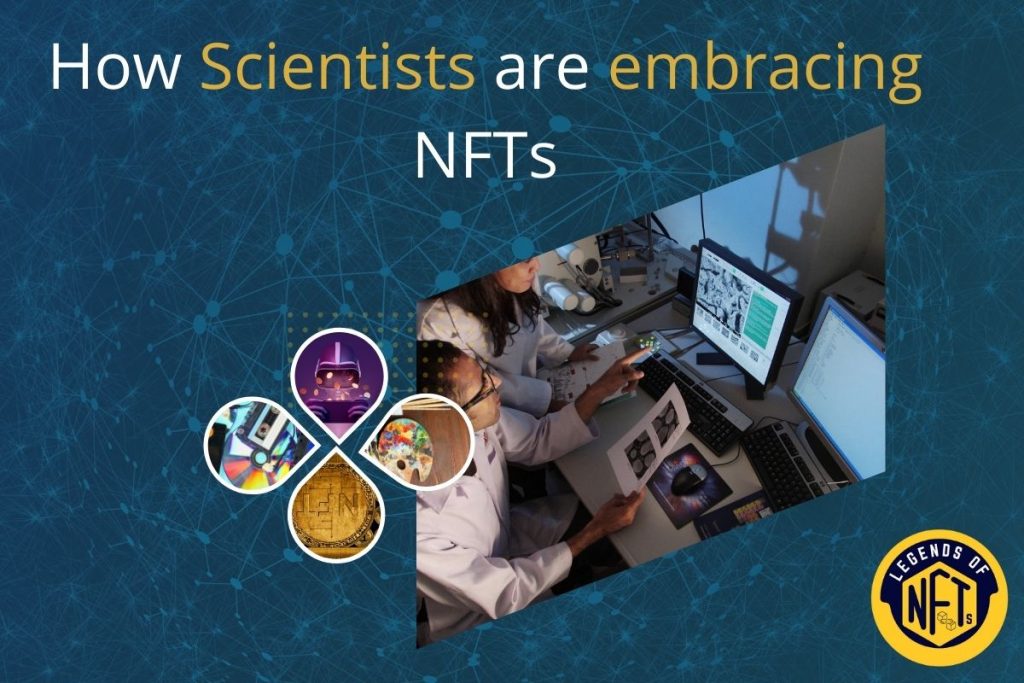Science has always been about exploring the unknown and pushing boundaries. So it’s no surprise that scientists and researchers are now embracing the potential of NFTs to help unlock new discoveries. NFTs are digital “tokens” that can be used to represent a wide range of assets, from digital art to legal contracts. Unlike traditional currencies, NFTs are not interchangeable – each one is unique. This makes them ideal for scientists, who often need to share data or other information that cannot be easily duplicated. From using them to study plant evolution, to investigating how climate change is affecting ecosystems, NFTs are proving to be a powerful tool for researchers. What’s even more exciting is that as this technology continues to evolve, we can only imagine what amazing discoveries will be made using NFTs!
Benefits of Using NFTs for Research
NFTs have been used in various scientific disciplines for many years, but their potential has only recently begun to be fully exploited. In particular, NFTs offer a number of advantages for scientists working in fields such as biology and medicine.
- First, NFTs can be used to study the structure and function of complex biological systems in a way that is not possible with traditional techniques.
- Second, NFTs can be used to simulate the behavior of real-world systems, allowing scientists to test their hypotheses without the need for expensive and time-consuming experiments.
- Finally, NFTs offer the potential to create virtual reality environments that can be used for training or research purposes.
In conclusion, NFTs offer a powerful tool for scientists that can help to advance our understanding of the natural world.
Examples of NFT Uses
- NFTs have already been used to protect medical research and scientific data. In 2018, for a team of researchers used an NFT to store the genome of a rare plant species. By storing the genome on the blockchain – the distributed ledger that underlies NFTs – the researchers were able to ensure that the data could not be altered or tampered with. This is important for scientific research, which relies on accurate data in order to produce reliable results.
- Scientists are also using NFTs to share experimental data and results. In 2019, a group of physicists used an NFT to store data from an experiment on quantum entanglement. By making the data available on the blockchain, they were able to allow other researchers access to the data while still maintaining control over it. This is important for scientific research, which often relies on collaboration between different groups of scientists.
Challenges of Using NFTs in Research Field
Along with their potential benefits, there are several challenges that come with using NFTs in scientific research.
- One of the key challenges is ensuring the accuracy and reliability of the data stored on NFTs.
- Another challenge is scalability; as more research data is stored on NFTs, it becomes increasingly difficult to manage and analyze all of this data.
- Although blockchain technology promises a strong security but it might still be a concern when it comes to using NFTs in research; if the data stored on NFTs is not properly secured, it could be susceptible to tampering or theft.
- Due to the immutability of NFTs, once data is stored on an NFT it cannot be changed or deleted, which could pose problems if errors are made or if the data needs to be updated for some reason.
- Finally, NFTs can be expensive to produce, which can limit their use in large-scale studies.
Despite these challenges, NFTs offer a unique and potentially valuable solution for storing and managing research data. With proper planning and implementation, NFTs could become an integral part of the research process.
Ethical Concerns
Another challenge that needs to be considered when using NFTs in research is ethics. Since NFTs are immutable, once data is stored on an NFT it cannot be changed or deleted. This could pose problems if the data stored on an NFT is inaccurate or if the subject of the research changes their mind about participating. Additionally, NFTs could be used to store sensitive information such as health records or financial data. If this information was to fall into the wrong hands, it could be used for nefarious purposes. As such, it is important to consider the ethical implications of using NFTs in research before implementing them.
Future Expectations
In the future, we can expect scientists to continue to explore the potential of NFTs and to find new and innovative ways to use them. Additionally, we can expect NFTs to become more commonplace in the scientific community, as they offer a secure and tamper-proof way to store and share data. Ultimately, the possibilities for NFTs are endless, and it is clear that they are here to stay.
Conclusion
It is clear that NFTs are here to stay and that they are changing the landscape of digital assets. In the future, NFTs could be used to create virtual museums, help people connect with experts across the globe, and much more. The possibilities are truly endless. As scientists continue to explore the potential of NFTs, it is clear that these unique assets are here to stay.
What do you think the future of NFTs holds? Let us know in the comments below!





